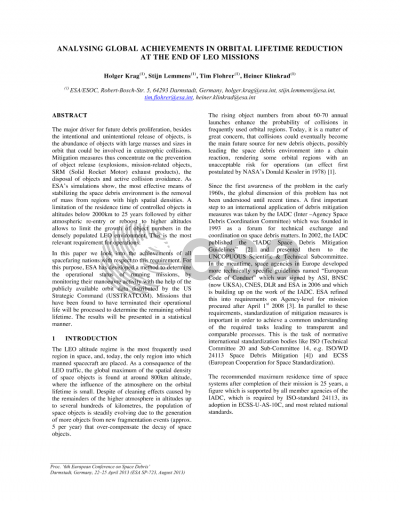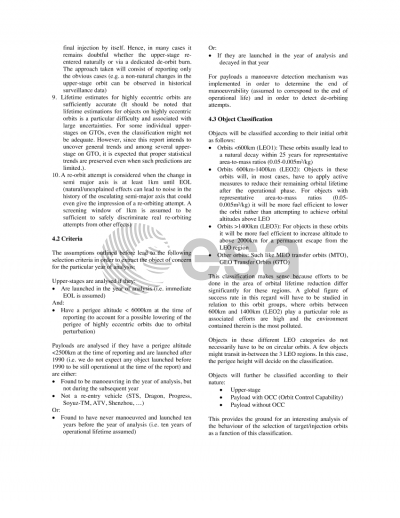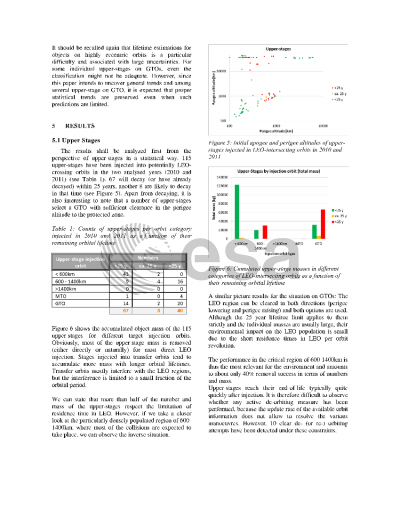Document details
Abstract
The major driver for future debris proliferation, besides the intentional and unintentional release of objects, is the abundance of objects with large masses and sizes in orbit that could be involved in catastrophic collisions. Mitigation measures thus concentrate on the prevention of object release (explosions, mission-related objects, SRM (Solid Rocket Motor) exhaust products), the disposal of objects and active collision avoidance. As ESA's simulations show, the most effective means of stabilizing the space debris environment is the removal of mass from regions with high spatial densities. A limitation of the residence time of controlled objects in altitudes below 2000km to 25 years followed by either atmospheric re-entry or reboost to higher altitudes allows to limit the growth of object numbers in the densely populated LEO environment. This is the most relevant requirement for operations. In this paper we look into the achievements of all spacefaring nations with respect to this requirement. For this purpose, ESA has developed a method to determine the operational status of running missions, by monitoring their manoeuvre activity with the help of the publicly available orbit data distributed by the US Strategic Command (USSTRATCOM). Missions that have been found to have terminated their operational life will be processed to determine the remaining orbital lifetime. The results will be presented in a statistical manner.
Preview
